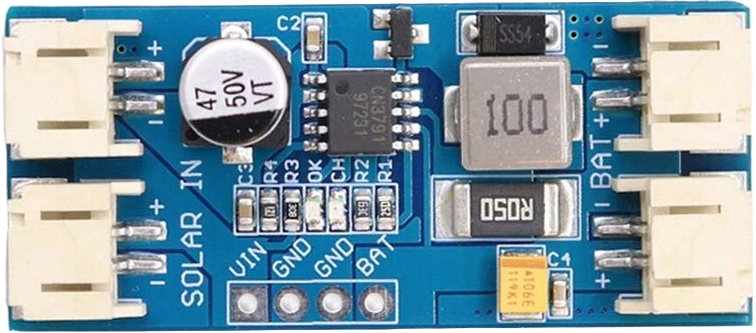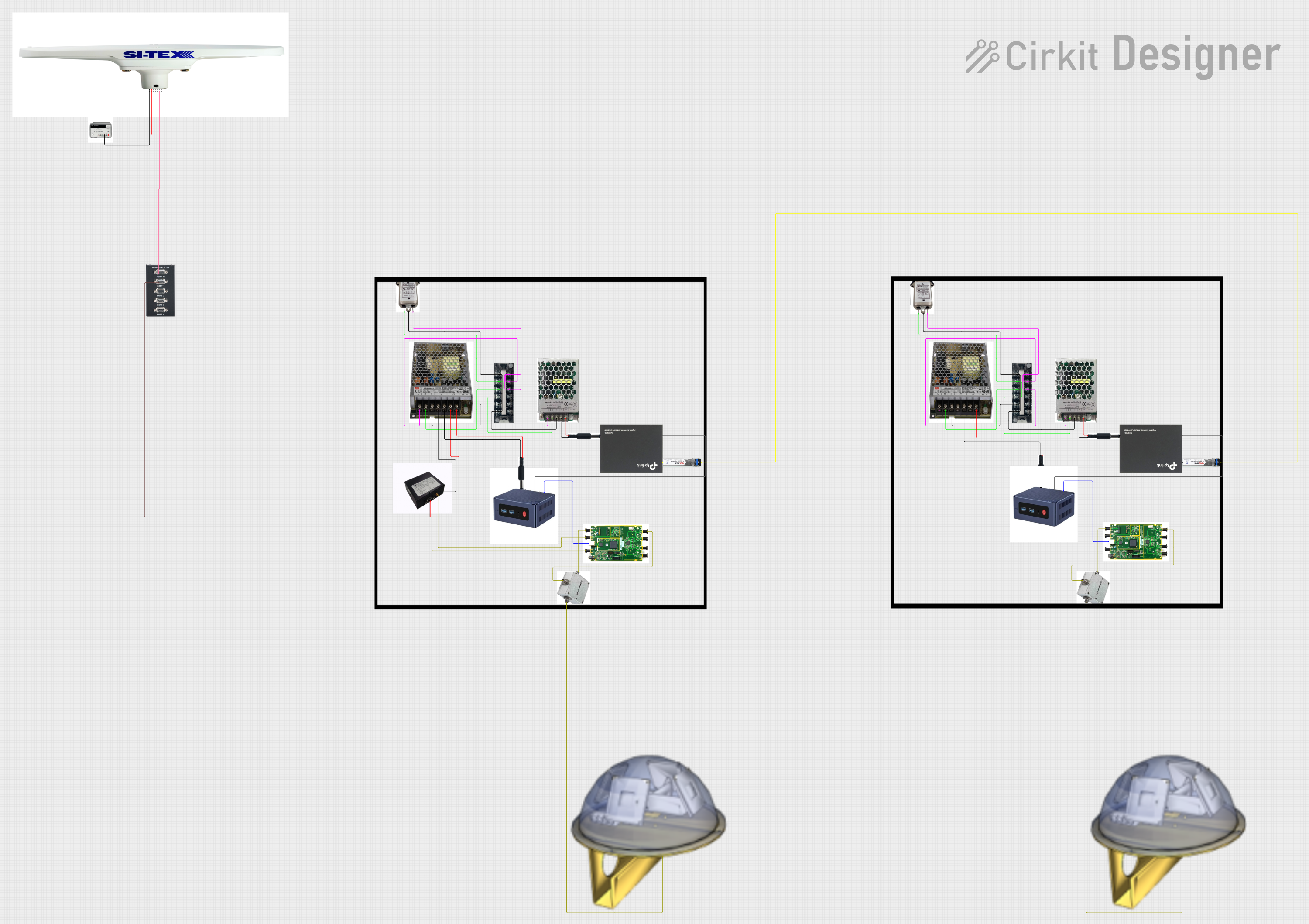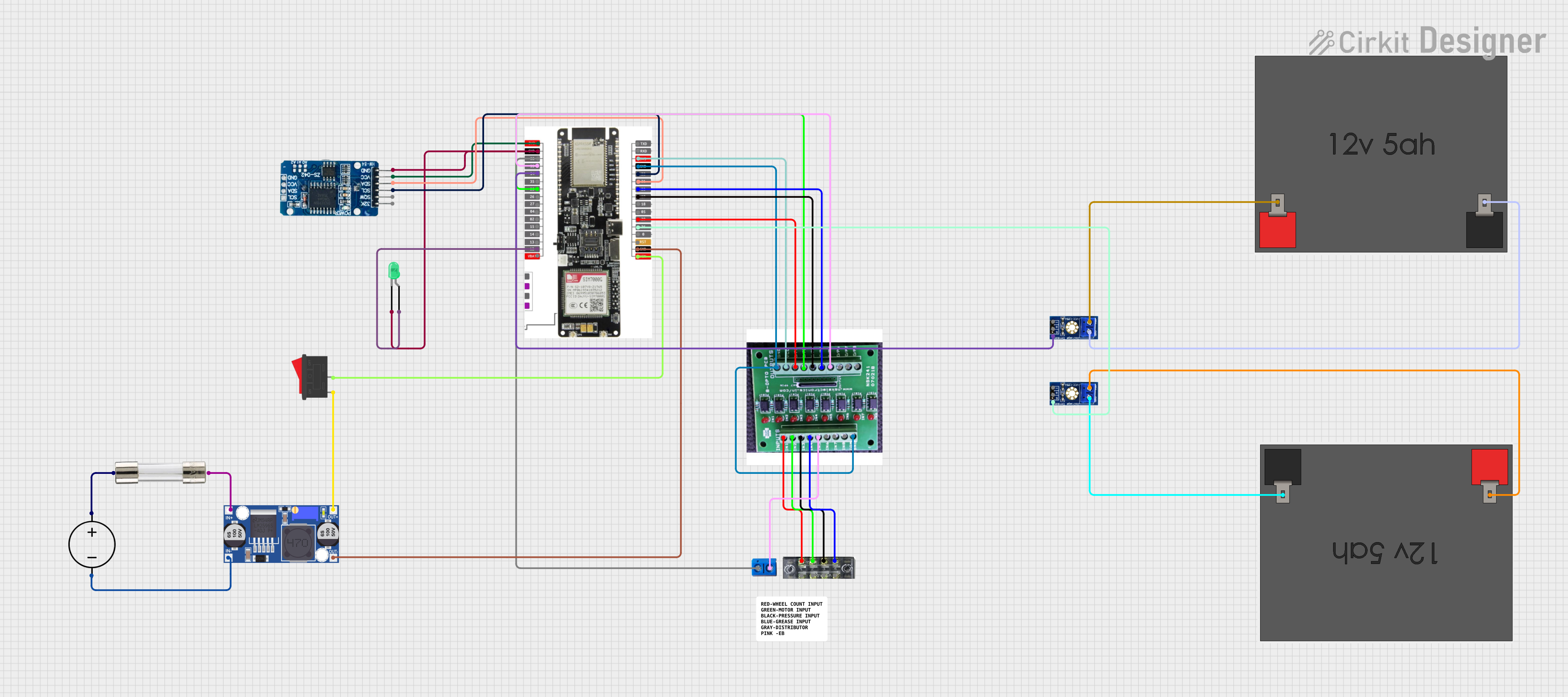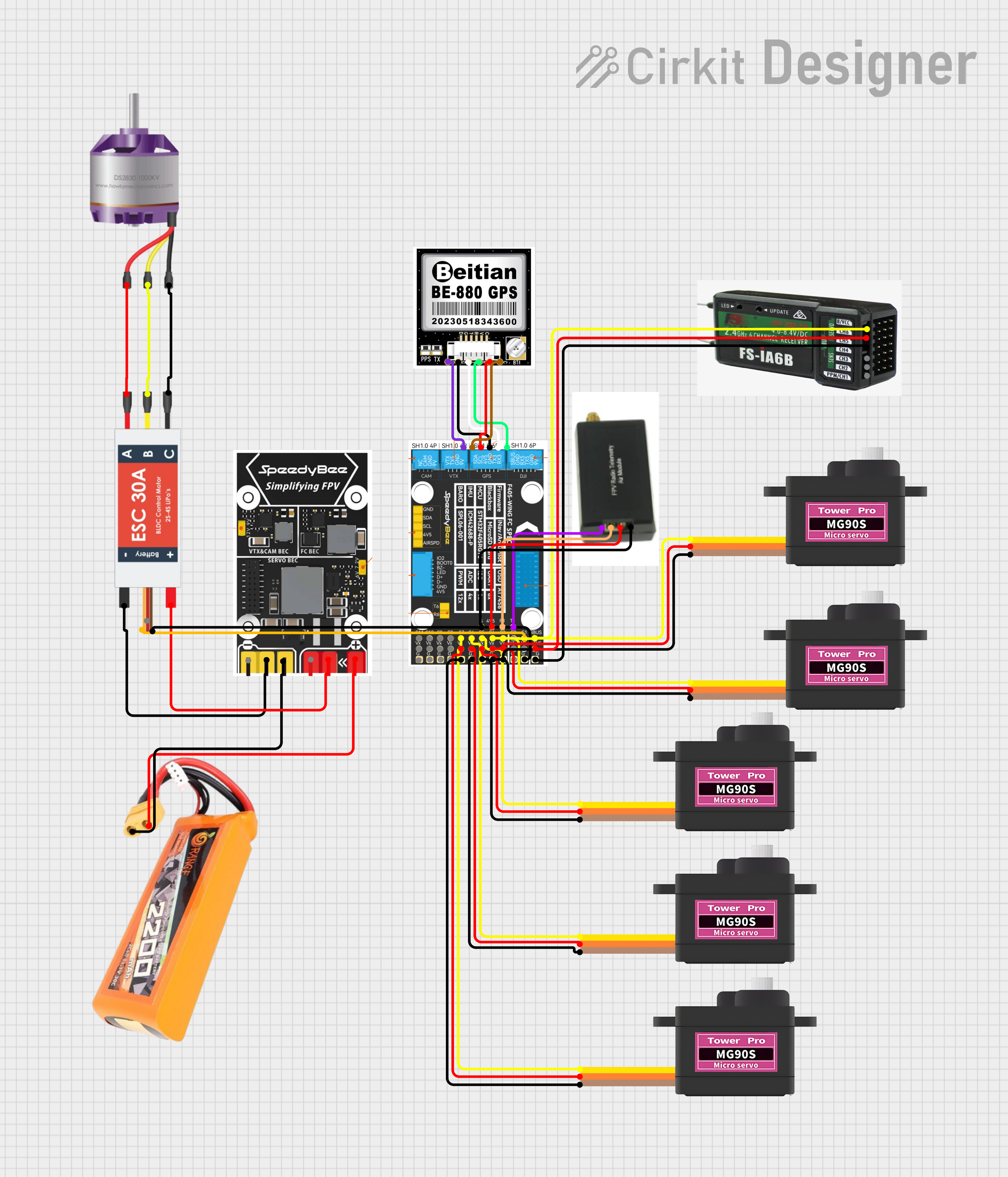
How to Use CN3791: Examples, Pinouts, and Specs

 Design with CN3791 in Cirkit Designer
Design with CN3791 in Cirkit DesignerIntroduction
The CN3791 is a high-efficiency step-down (buck) voltage regulator designed for low-power applications. It is capable of converting a higher input voltage to a stable, lower output voltage with high efficiency. The CN3791 features a wide input voltage range, adjustable output voltage, and built-in protection mechanisms such as overcurrent protection and thermal shutdown. These features make it ideal for use in battery-powered devices, portable electronics, and other compact electronic systems requiring efficient power regulation.
Explore Projects Built with CN3791

 Open Project in Cirkit Designer
Open Project in Cirkit Designer
 Open Project in Cirkit Designer
Open Project in Cirkit Designer
 Open Project in Cirkit Designer
Open Project in Cirkit Designer
 Open Project in Cirkit Designer
Open Project in Cirkit DesignerExplore Projects Built with CN3791

 Open Project in Cirkit Designer
Open Project in Cirkit Designer
 Open Project in Cirkit Designer
Open Project in Cirkit Designer
 Open Project in Cirkit Designer
Open Project in Cirkit Designer
 Open Project in Cirkit Designer
Open Project in Cirkit DesignerCommon Applications
- Battery-powered devices (e.g., lithium-ion battery chargers)
- Portable electronics
- LED drivers
- Low-power embedded systems
- Industrial control systems
Technical Specifications
Key Technical Details
| Parameter | Value |
|---|---|
| Input Voltage Range | 4.5V to 28V |
| Output Voltage Range | Adjustable (up to 25V) |
| Output Current | Up to 3A |
| Efficiency | Up to 96% |
| Switching Frequency | 300kHz |
| Operating Temperature | -40°C to +85°C |
| Protection Features | Overcurrent, thermal shutdown, short-circuit protection |
Pin Configuration and Descriptions
The CN3791 is typically available in an 8-pin SOP (Small Outline Package). Below is the pin configuration:
| Pin Number | Pin Name | Description |
|---|---|---|
| 1 | VIN | Input voltage supply (4.5V to 28V). |
| 2 | GND | Ground connection. |
| 3 | SW | Switching node. Connect to the inductor. |
| 4 | FB | Feedback pin. Used to set the output voltage. |
| 5 | EN | Enable pin. High to enable, low to disable. |
| 6 | COMP | Compensation pin for loop stability. |
| 7 | NC | No connection (leave unconnected). |
| 8 | VOUT | Regulated output voltage. |
Usage Instructions
How to Use the CN3791 in a Circuit
- Input Voltage Supply: Connect a DC voltage source (4.5V to 28V) to the VIN pin. Ensure the input voltage is within the specified range.
- Output Voltage Adjustment: Use a resistor divider network connected to the FB pin to set the desired output voltage. The output voltage can be calculated using the formula: [ V_{OUT} = V_{REF} \times \left(1 + \frac{R1}{R2}\right) ] where ( V_{REF} ) is typically 1.25V.
- Inductor Selection: Choose an inductor with appropriate current rating and inductance value to ensure stable operation. A typical value is 10µH to 22µH.
- Capacitor Selection: Use low ESR capacitors for input and output filtering. A 10µF ceramic capacitor is commonly used for both input and output.
- Enable Pin: Connect the EN pin to a logic high voltage to enable the regulator. Pull it low to disable the regulator.
- Thermal Considerations: Ensure proper heat dissipation by using a PCB with adequate copper area around the CN3791.
Example Circuit
Below is a basic example of a CN3791 circuit for a 12V input and 5V output:
VIN (12V) ----+----[10µF]----+---- VIN (Pin 1)
| |
[10µH] [GND]
| |
SW (Pin 3) GND (Pin 2)
|
FB (Pin 4) ----[R1]----+----[R2]---- GND
|
VOUT (Pin 8)
Arduino UNO Example Code
The CN3791 can be used to power an Arduino UNO. Below is an example code to monitor the output voltage using the Arduino's ADC:
// CN3791 Output Voltage Monitoring with Arduino UNO
// Connect the CN3791 output to the Arduino's A0 pin for voltage monitoring.
const int voltagePin = A0; // Analog pin connected to CN3791 output
const float referenceVoltage = 5.0; // Arduino reference voltage (5V)
const float resistorRatio = 2.0; // Adjust based on your resistor divider
void setup() {
Serial.begin(9600); // Initialize serial communication
pinMode(voltagePin, INPUT); // Set A0 as input
}
void loop() {
int adcValue = analogRead(voltagePin); // Read ADC value
float voltage = (adcValue / 1023.0) * referenceVoltage * resistorRatio;
// Print the measured voltage to the Serial Monitor
Serial.print("Output Voltage: ");
Serial.print(voltage);
Serial.println(" V");
delay(1000); // Wait for 1 second before the next reading
}
Important Considerations
- Ensure the input voltage is always higher than the desired output voltage.
- Use proper decoupling capacitors to minimize noise and ensure stable operation.
- Avoid exceeding the maximum current rating (3A) to prevent damage to the component.
- Place the inductor and capacitors as close as possible to the CN3791 to reduce EMI.
Troubleshooting and FAQs
Common Issues and Solutions
No Output Voltage:
- Check if the EN pin is connected to a logic high voltage.
- Verify the input voltage is within the specified range (4.5V to 28V).
- Inspect the feedback resistor network for proper connections.
Output Voltage is Unstable:
- Ensure the inductor and capacitors have appropriate values.
- Check for loose or poor solder connections.
- Verify the compensation network (COMP pin) is correctly configured.
Overheating:
- Ensure proper heat dissipation by using a PCB with sufficient copper area.
- Verify the load current does not exceed the maximum rating (3A).
Low Efficiency:
- Use low ESR capacitors for input and output filtering.
- Ensure the inductor has a low DC resistance (DCR).
FAQs
Q: Can the CN3791 be used for charging batteries?
A: Yes, the CN3791 is suitable for charging batteries, especially lithium-ion batteries, due to its adjustable output voltage and current capabilities.
Q: What is the maximum output voltage of the CN3791?
A: The maximum output voltage is adjustable up to 25V, depending on the input voltage and feedback resistor configuration.
Q: Can the CN3791 operate without a load?
A: Yes, the CN3791 can operate without a load, but it is recommended to have a small minimum load for stable operation.
Q: How do I calculate the feedback resistors for a specific output voltage?
A: Use the formula ( V_{OUT} = V_{REF} \times \left(1 + \frac{R1}{R2}\right) ), where ( V_{REF} ) is typically 1.25V. Select ( R1 ) and ( R2 ) accordingly.